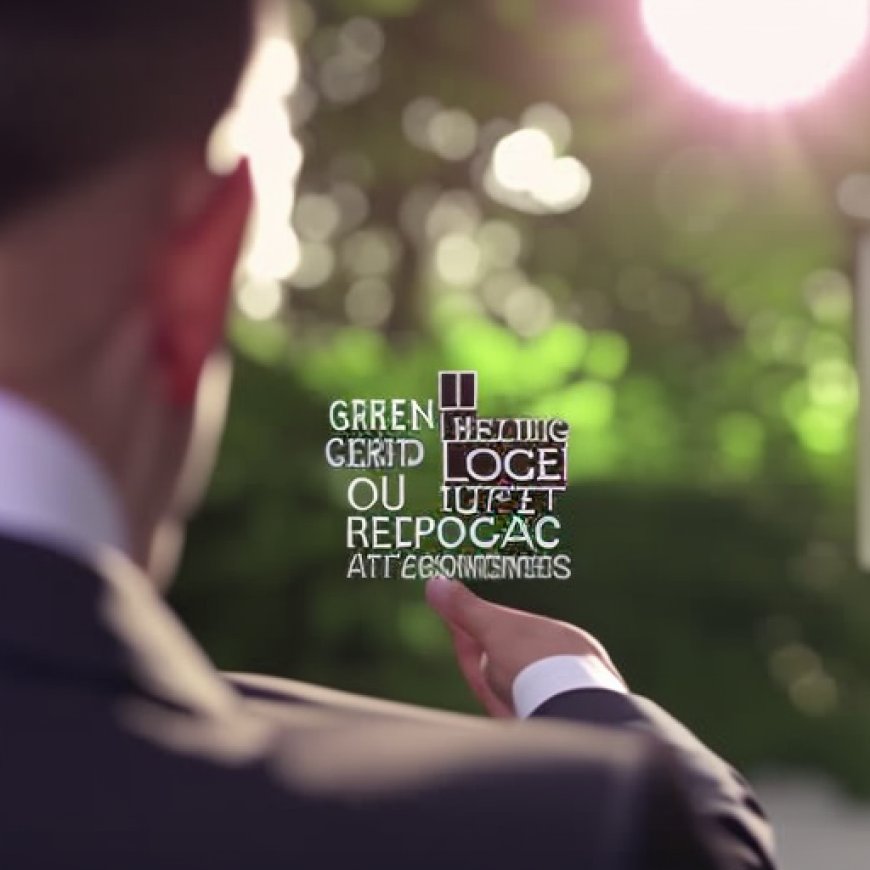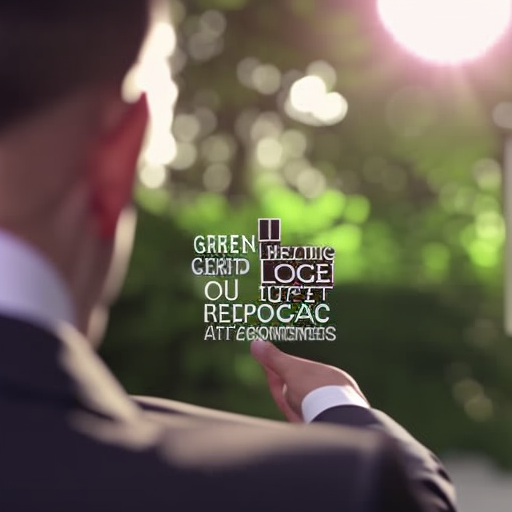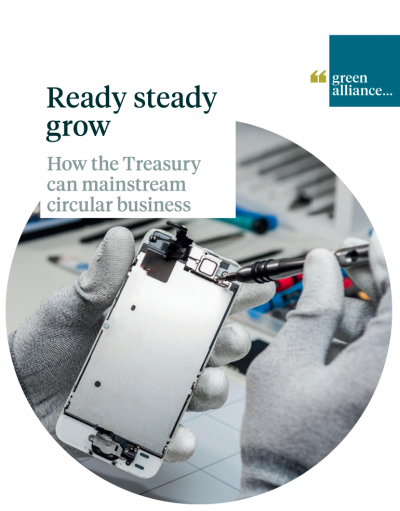Green Alliance report recommends tax adjustments to help circular economy
Green Alliance report recommends tax adjustments to help circular ... Resource.co


The Circular Economy and its Economic Benefits

The circular economy differs from the ‘take, make, use and throw’ model currently in place through the linear (non-circular) economy. Instead, the objective is to keep materials in circulation for as long as possible, preserving them at their highest value.
There are several measures that characterise circular models. These can include:
- Designing for longevity
- Systems of reuse and sharing
- ‘Reverse supply chains’ that collect goods for reprocessing, resale or redistribution
Though recycling possesses an important role, the waste hierarchy of the circular economy prioritises the reuse and remanufacturing of materials to ensure the maintenance of value.
What are the economic benefits of the circular economy?
WRAP estimates that by switching to the circular economy, gross value added could rise by £82 billion by the year 2030. Moreover, Cambridge Econometrics indicate it could contribute to a one per cent rise in GDP by 2035.
Studies indicate that the economic benefits of moving to a circular economy stem from increased consumer spending power alongside the establishment of higher-paid jobs. For example, for every thousand tonnes of waste, there are two jobs in recycling compared to 0.1 jobs in waste treatment and disposal.
The Green Alliance report highlights that due to the structure of the UK economy – with low levels of extractive industries and primary manufacturing – it is well positioned to gain significantly from the circular economy. It also estimates that the creation of more high-skilled circular jobs is likely to benefit regions with higher unemployment rates such as Wales and the East Midlands.
What is holding the circular economy back?
Through the analysis of ten case studies on circular businesses, the Green Alliance report finds that current business and consumer habits pose a significant barrier to the adoption of the circular economy, especially in the field of leasing or rental. Preferences for cheap, easily accessible and poorer quality goods have prevented growth for circular businesses that offer greater longevity in their products.
Green Alliance highlights the existence of an unlevel playing field in taxation as a significant barrier to the development of the circular economy. The current taxation system disadvantages circular practices, with VAT rules uniform across both the linear and circular economies despite the environmental advantages of the latter. This, therefore, means that reused and remanufactured goods find themselves taxed multiple times.
Additionally, the report finds that high upfront costs have created challenges for the growth of circular businesses, with consumers often reluctant to purchase circular products due to the added cost burden.
How can the Treasury help grow the circular economy?
The report recommends three proposals that the Treasury should consider to help the growth of the circular economy.
- The first recommendation is that the Treasury ‘levels the playing field’ between the circular and linear economy. To encourage repair and make it more affordable, the report argues that VAT should be zero-rated, prioritising high-impact waste like electronics. Green Alliance proposes that this should include spare parts and labour.
- The report also states that tax reliefs for leasing businesses would help level the playing field. Tax relief schemes, such as the Seed Enterprise Investment Scheme (SEIS), are often inaccessible. Under current rules, new businesses are ineligible if their gross assets – such as rented vehicles or clothing – reach £200,000.
- The second recommendation Green Alliance proposes to the treasury is to provide financial assistance to new circular businesses. The report claims that a majority of funding surrounding waste currently goes towards treating waste arising from the linear economy rather than helping nurture an economy that designs from waste.
The charity recommends a dedicated £800 million fund to address this imbalance and help kickstart new circular businesses. It claims this will help overcome the barrier of high upfront costs.
Finally, the report proposes that a greater understanding of the impacts of tax is needed. Evidence of the impact of tax measures is not currently routinely collected and an assessment of whether environmentally motivated tax reliefs contribute to their social and economic objectives has not been conducted.
Approaches to creating widespread change require an in-depth understanding of how policy will affect behaviour. It is often assumed that consumer activity is primarily motivated by cost, but this oversimplifies the numerous decisions consumers make. Green Alliance suggests that policy ideas should therefore be tested with both the public and business at their earliest stages and that concerns around convenience, trust and fairness should be brought into consideration.

SDGs, Targets, and Indicators Relevant to the Circular Economy
1. Sustainable Development Goal 8: Decent Work and Economic Growth
- Target 8.4: Improve progressively, through 2030, global resource efficiency in consumption and production and endeavor to decouple economic growth from environmental degradation.
- Indicator 8.4.1: Material footprint, material footprint per capita, and material footprint per GDP.
2. Sustainable Development Goal 12: Responsible Consumption and Production
- Target 12.2: By 2030, achieve the sustainable management and efficient use of natural resources.
- Indicator 12.2.1: Material footprint, material footprint per capita, and material footprint per GDP.
3. Sustainable Development Goal 13: Climate Action
- Target 13.3: Improve education, awareness-raising, and human and institutional capacity on climate change mitigation, adaptation, impact reduction, and early warning.
- Indicator 13.3.1: Number of countries that have integrated mitigation, adaptation, impact reduction, and early warning into primary, secondary, and tertiary curricula.
4. Sustainable Development Goal 17: Partnerships for the Goals
- Target 17.16: Enhance the global partnership for sustainable development, complemented by multi-stakeholder partnerships that mobilize and share knowledge, expertise, technology, and financial resources.
- Indicator 17.16.1: Number of countries reporting progress in multi-stakeholder development effectiveness monitoring frameworks that support the achievement of the sustainable development goals.
Analysis of the Article
1. Which SDGs are addressed or connected to the issues highlighted in the article?
The issues highlighted in the article are connected to Sustainable Development Goals 8, 12, 13, and 17.
2. What specific targets under those SDGs can be identified based on the article’s content?
Based on the article’s content, the specific targets identified are:
– Target 8.4: Improve progressively, through 2030, global resource efficiency in consumption and production and endeavor to decouple economic growth from environmental degradation.
– Target 12.2: By 2030, achieve the sustainable management and efficient use of natural resources.
– Target 13.3: Improve education, awareness-raising, and human and institutional capacity on climate change mitigation, adaptation, impact reduction, and early warning.
– Target 17.16: Enhance the global partnership for sustainable development, complemented by multi-stakeholder partnerships that mobilize and share knowledge, expertise, technology, and financial resources.
3. Are there any indicators mentioned or implied in the article that can be used to measure progress towards the identified targets?
The article mentions or implies the following indicators:
– Indicator 8.4.1: Material footprint, material footprint per capita, and material footprint per GDP.
– Indicator 12.2.1: Material footprint, material footprint per capita, and material footprint per GDP.
– Indicator 13.3.1: Number of countries that have integrated mitigation, adaptation, impact reduction, and early warning into primary, secondary, and tertiary curricula.
– Indicator 17.16.1: Number of countries reporting progress in multi-stakeholder development effectiveness monitoring frameworks that support the achievement of the sustainable development goals.
Table: SDGs, Targets, and Indicators
| SDGs | Targets | Indicators |
|---|---|---|
| Sustainable Development Goal 8: Decent Work and Economic Growth | Target 8.4: Improve progressively, through 2030, global resource efficiency in consumption and production and endeavor to decouple economic growth from environmental degradation. | Indicator 8.4.1: Material footprint, material footprint per capita, and material footprint per GDP. |
| Sustainable Development Goal 12: Responsible Consumption and Production | Target 12.2: By 2030, achieve the sustainable management and efficient use of natural resources. | Indicator 12.2.1: Material footprint, material footprint per capita, and material footprint per GDP. |
| Sustainable Development Goal 13: Climate Action | Target 13.3: Improve education, awareness-raising, and human and institutional capacity on climate change mitigation, adaptation, impact reduction, and early warning. | Indicator 13.3.1: Number of countries that have integrated mitigation, adaptation, impact reduction, and early warning into primary, secondary, and tertiary curricula. |
| Sustainable Development Goal 17: Partnerships for the Goals | Target 17.16: Enhance the global partnership for sustainable development, complemented by multi-stakeholder partnerships that mobilize and share knowledge, expertise, technology, and financial resources. | Indicator 17.16.1: Number of countries reporting progress in multi-stakeholder development effectiveness monitoring frameworks that support the achievement of the sustainable development goals. |
Behold! This splendid article springs forth from the wellspring of knowledge, shaped by a wondrous proprietary AI technology that delved into a vast ocean of data, illuminating the path towards the Sustainable Development Goals. Remember that all rights are reserved by SDG Investors LLC, empowering us to champion progress together.
Source: resource.co

Join us, as fellow seekers of change, on a transformative journey at https://sdgtalks.ai/welcome, where you can become a member and actively contribute to shaping a brighter future.







